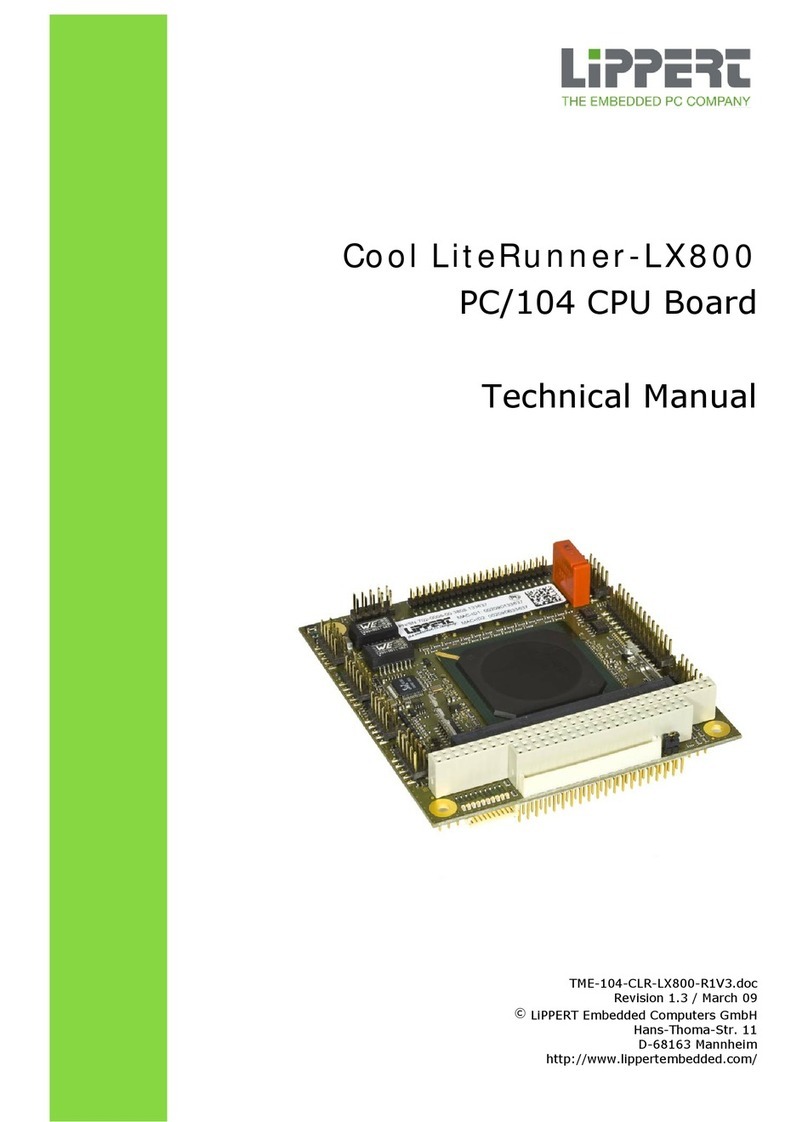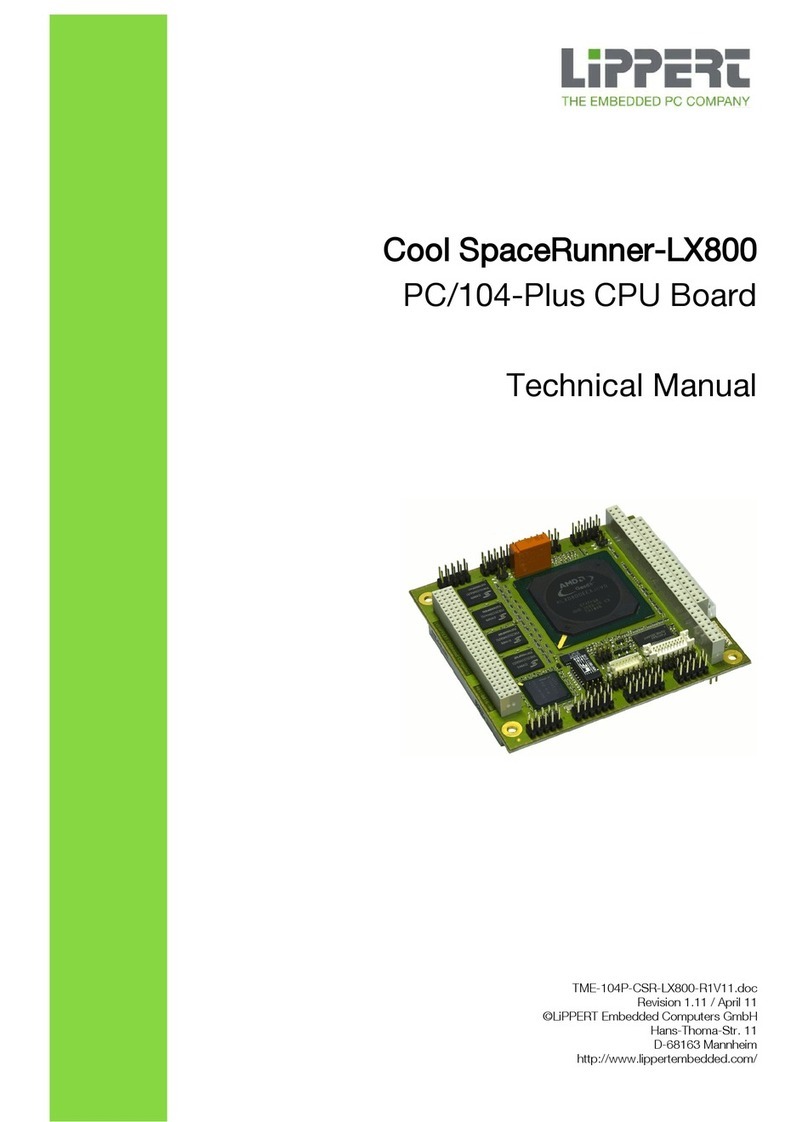Technical Manual PC/104-Plus “Cool RoadRunner II” Version 1.16 April 2004 Page 3 of 42
1.24 TV-OUT ................................................................................................................................................... 19
1.25 Ethernet-Controller................................................................................................................................ 20
1.26 Watchdog ............................................................................................................................................... 21
1.26.1 Short-time watchdog timer.................................................................................................................... 21
1.26.2 Long-time watchdog timer.................................................................................................................... 21
2HARDWARE INSTALLATION...................................................................................24
2.1 Adapter cable set..................................................................................................................................... 24
2.2 BIOS.......................................................................................................................................................... 24
2.3 Software installation ............................................................................................................................... 25
3CONNECTORS..........................................................................................................26
3.1 Power connector pin definition.............................................................................................................. 26
3.2 COM1 port connector pin definition...................................................................................................... 26
3.3 COM2 port connector pin definition...................................................................................................... 26
3.4 LPT1 port connector pin definition........................................................................................................ 26
3.5 Keyboard connector pin definition........................................................................................................ 27
3.6 VGA connector pin definition................................................................................................................. 27
3.7 10/100BaseT connector pin definition................................................................................................... 28
3.8 PS/2 Mouse / USB / IrDA / Audio connector pin definition.................................................................. 28
3.9 EIDE connector pin definition................................................................................................................ 28
3.10 Floppy connector pin definition........................................................................................................... 29
3.11 TV-OUT connector pin definition......................................................................................................... 29
3.12 Flat Panel connector pin definition...................................................................................................... 30
3.13 PC/104-Plus bus pin definition............................................................................................................. 31
3.14 PC/104 bus pin definition...................................................................................................................... 32
3.15 Video Input Port..................................................................................................................................... 33
©LIPPERT Automationstechnik GmbH • Hans-Thoma-Str. 11 • 68163 Mannheim • Tel: 0621/43214-0 • Fax: 0621/43214-30






























